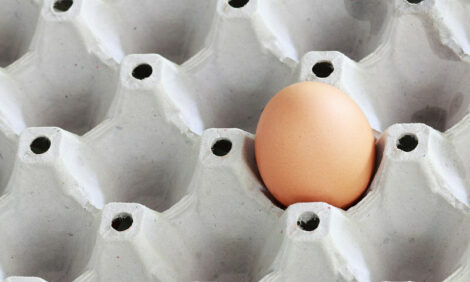



Dutch Consumers Want End to Killing 'Layer Males'
NETHERLANDS - Sixty per cent of the public wanted to see an alternative to the killing of day-old male chicks from layer flocks, according to a survey published by Wageningen University.In a recent newsletter, Animal Breeding and Genomics Centre at Wageningen University explained that diffeerent highly specialised breeds of chicken are used for the production of eggs and meat. Because the male chicks of laying breeds neither lay eggs nor are they profitable as a source of meat, they are killed as day-old chicks. In the Netherlands, 30 million male chicks are killed at hatch, every year.
The Animal Sciences Group in Lelystad, in collaboration with the Rathenau Institute and the Agricultural Economics Institute (LEI) have conducted research to find out what the public thinks about possible alternatives for killing day-old male chicks. Information was gained by holding discussions with focal groups, in combination with a wider public survey. The outcome of this research was published in a report entitled Killing day-old male chicks: isn't there an alternative? presented in October 2008 to the Lower Chamber of the Dutch Parliament.
A clear majority of those who responded rated the killing of day-old male chicks 'unpleasant', 'bad' or 'very bad', and almost 60 per cent were in favour of trying to find an alternative.
From this result, three technological alternatives for killing day-old chicks, that would gain reasonable acceptance and support from society, have been identified, and will be the subject of further research. These are:
- To pick out the 'male' eggs by looking inside freshly laid eggs. (Another alternative, e.g. to select the male eggs at a later stage of embryonic development, was considered much less favourable.)
- To influence sex determination by manipulating the environmental factors that affect sex determination in chickens. However, before following this route, it would be important first to ensure that such changes would not harm the welfare of the chickens.
- The third alternative is the same as the first one, except that it would be facilitated by genetic modification, by using a gene for green fluorescent protein. This method received less support from the public survey than the method without genetic modification.
The additional option of 'combination chickens' also received a high score, but, because of the current specialisation into laying or meat chickens, it would be too expensive. (It is estimated that the feed costs per egg or per kg meat would at least double.) It might be a feasible option for a niche market but it could not be considered as a structural solution for the mass killing of day-old male chicks.
Although the option of 'accepting the current method of killing the chicks' was viewed as undesirable, it was nevertheless regarded as a possible realistic option.
Follow-up research will now be started to assess the 'technical' principles of these alternatives and to amass the knowledge needed for their development. Initially, efforts will be focused on the first two alternatives.








